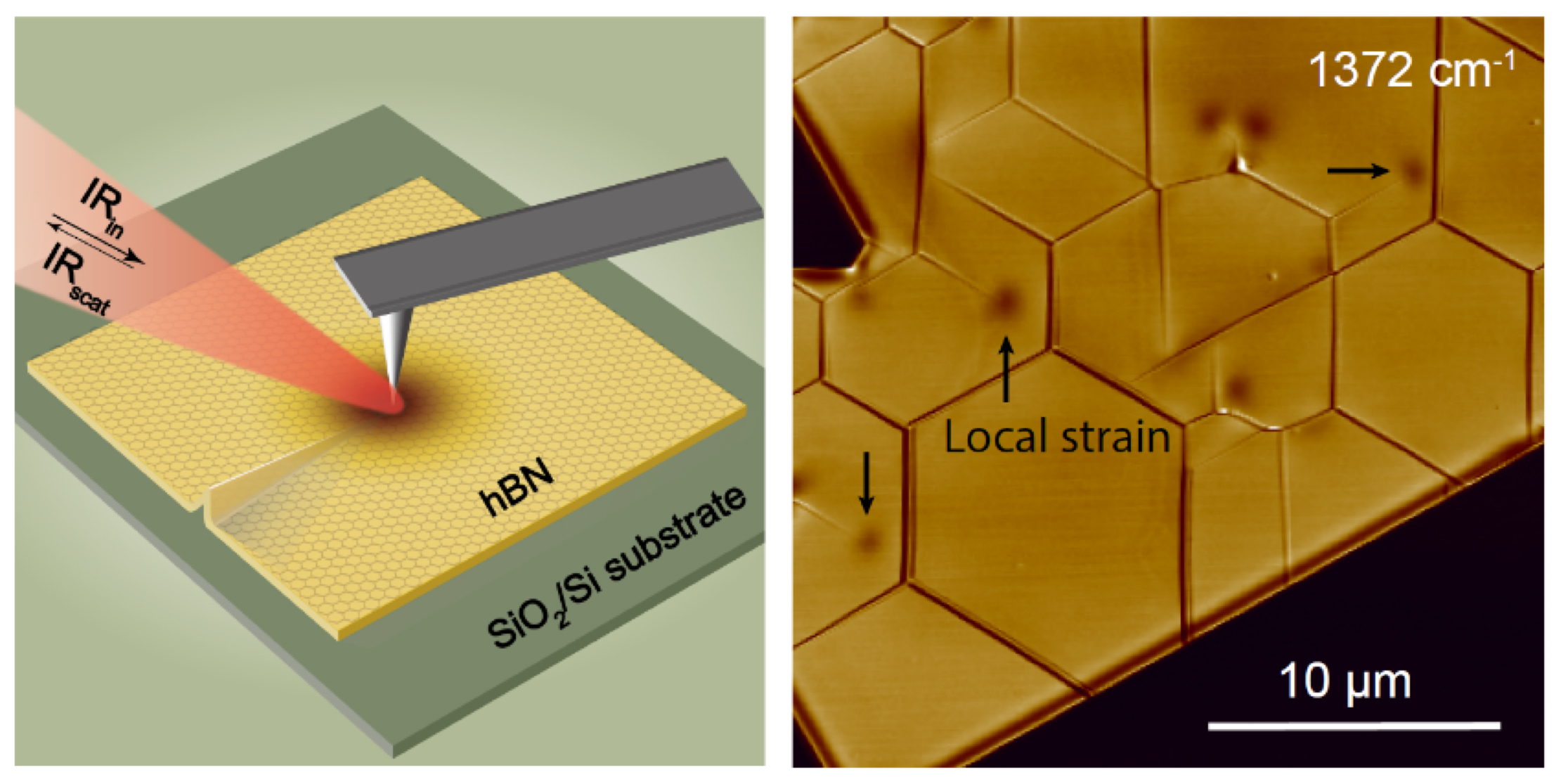In atomically thin 2D materials, strain can lead to changes in bond lengths, which in turn can have dramatic effects on the materials’ mechanical, electrical, and optical properties, giving rise to many exotic physical phenomena. Measuring strain distribution is crucial to understanding these phenomena, but it has proven to be extremely challenging. Now, researchers have demonstrated an ultrasensitive infrared technique that can map local strain with nanometer spatial resolution (much smaller than the wavelengths of infrared light).
Atomically thin hexagonal boron nitride (hBN) is an insulating material that’s very stable and flat. Because of these characteristics, it’s often used as a substrate for other 2D materials such as graphene. In addition, a strong coupling between light waves and lattice vibrations (i.e., phonon polariton modes) in hBN makes it a promising material for future nanophotonic applications.
Previous studies have shown that infrared nanospectroscopy provides a powerful tool for probing the propagation of phonon polaritons in hBN. In this work, researchers used a combination of laser- and synchrotron-based infrared light to demonstrate phonon polariton–assisted mapping of local strain in hBN. The broadband infrared light provided by Advanced Light Source (ALS) Beamline 5.4 allowed the researchers to directly measure shifts in the lattice-vibration frequencies between strained and unstrained areas.
The results indicate that this method can detect a local strain as low as 0.01% with a spatial resolution of 10 nm, an improvement of two to three orders over traditional spectroscopy. In addition, the experiments provided evidence for local strain-induced phonon polariton reflection, offering a new approach to the manipulation of light at deeply subwavelength scales.

B. Lyu, H. Li, L. Jiang, W. Shan, C. Hu, A. Deng, Z. Ying, L. Wang, Y. Zhang, H.A. Bechtel, M.C. Martin, T. Taniguchi, K. Watanabe, W. Luo, F. Wang, and Z. Shi, “Phonon Polariton-assisted Infrared Nanoimaging of Local Strain in Hexagonal Boron Nitride,” Nano Lett. 19, 1982 (2019), doi:10.1021/acs.nanolett.8b05166.